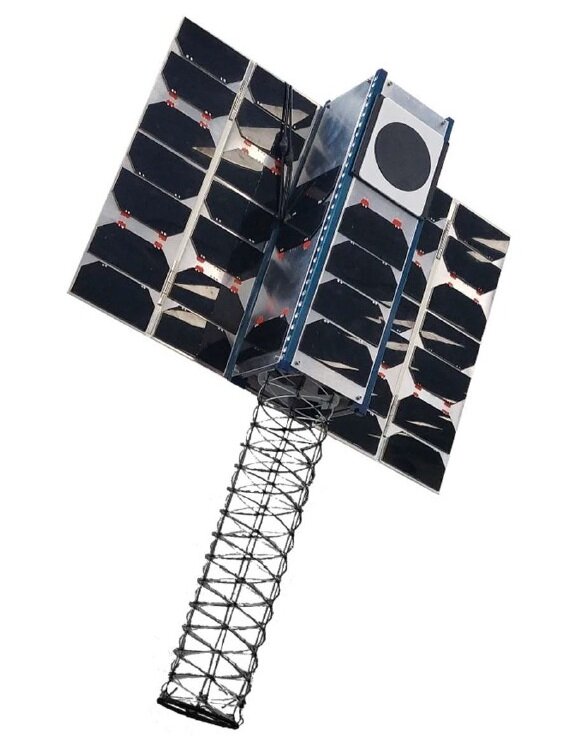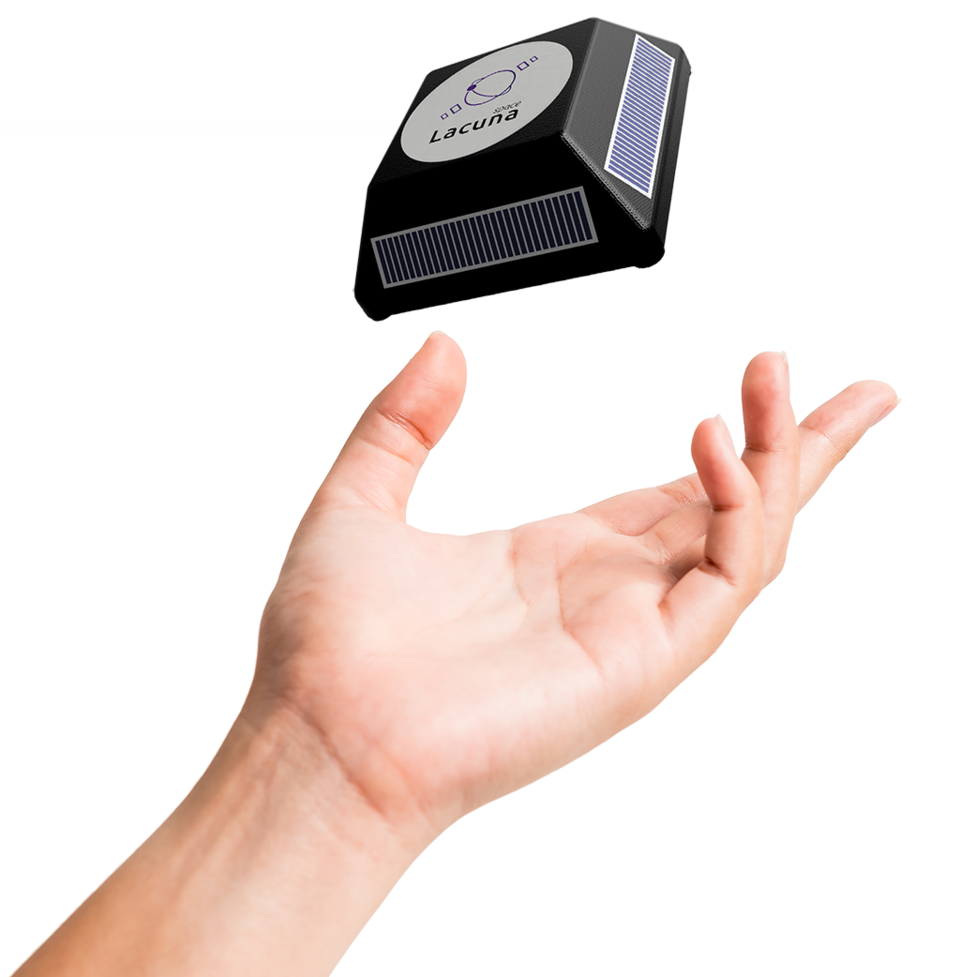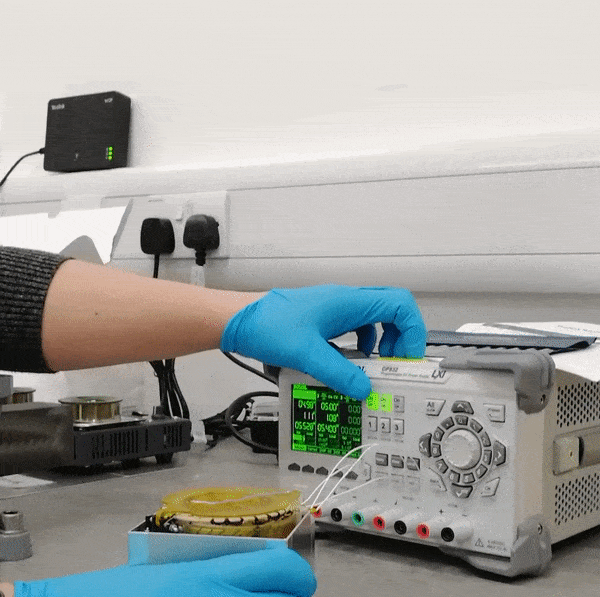Origami antenna springs up for small satellites
A novel helical antenna that sprang from a container the size of a tuna can is now operational in orbit. Developed by Oxford Space Systems in partnership with ESA, this origami-inspired antenna is equal in length to the shoebox-sized satellite hosting it, part of a growing constellation of nanosatellites providing Internet of Things services around the globe.
This latest operational satellite from UK company Lacuna Space, was launched on 28 September into low Earth orbit. After launch, it underwent a series of in-orbit tests to establish it as part of Lacuna’s Internet of Things network.

As a 3-unit ‘CubeSat’ built up from standardised 10-cm boxes, the satellite is smaller and cheaper than traditional satellites, but can still pick up signals from battery powered ground-based sensors, small enough to hold in the palm of a hand. The mission is targeting Internet of Things applications such as agricultural and environmental monitoring as well as equipment and freight tracking – aided by its high-performance helical antenna.
This new antenna took shape through an ESA R&D project, supported by the UK Space Agency through ESA's General Support Technology Programme (GSTP), preparing promising technologies for space and the open market.
“The Internet of Things is going to be one of the catalysts for the green revolution we all want to see – helping us monitor everything from air and water quality, to assessing pollution levels around factories, rivers and cities," remarks UK Space Agency Chief Executive Graham Turnock. “These green technologies are being made possible by cutting edge inventions by UK space companies, like this new Oxford Systems antenna.”
“Until this project, no European-made antenna of this kind was commercially available,” explains project technical officer Benedetta Fiorelli of ESA’s Antennae & Sub-mm Waves section.

“Having identified this gap in the market we proposed addressing it to various funding schemes, and it was GSTP that gave us the chance to take the idea forward. The result, little more than a year after the project started, is a tangible product already operating in space.”
CubeSats are growing in popularity because they draw maximum benefit from the latest miniaturised commercial-off-the-shelf components, to do more with less. But antennas are one satellite subsystem that cannot easily be shrunk down in size.

“We hit hard physical laws that link the size of the antenna’s radiating element with the frequency being used,” adds Benedetta. “So it becomes a challenge to accommodate the antenna aboard a small platform and still do useful work. For instance many CubeSats use simple thin wires antennas deploying from satellite bodies.
“But their performance is not optimal for Internet of Things type applications. Helical antennas are an inherently flexible design with many more parameters that can be tuned precisely as required – the antenna radius, number of spirals, pitch angle and so on.”
Founded in 2013 and based at ESA’s Harwell space campus, Oxford Space Systems has its focus on small, light satellite booms and antennas, to be folded away tightly before launch then spring to full size in orbit, origami-like.

“When we started working on deployable helical antennas we looked at which companies might be interested in that, and Oxford Space Systems was high on the list,” says Benedetta. “We engaged on the GSTP side while the company gained the support of their national ESA delegation, allowing the project to happen.
“It’s a good example of the role ESA should play: we identify a technology gap while industry spots a market opportunity, then we support industry in responding to it. The bulk of the work was done by Oxford Space Systems, including physical properties, radio frequency and deployment testing – slowed down somewhat by this year’s COVID-19 restrictions.”


Access the video
Midway through the project, the company found a customer for their product, in the shape of Lacuna Space, a Harwell neighbour. Since then a second antenna has also flown, aboard another Lacuna CubeSat launched from India earlier this month.
“Even if it was in our plan since the beginning, I was surprised when they told me,” says Benadetta. “Activity sped up significantly during summer due to this flight opportunity,. In space terms that’s a fast turnaround to go from starting a project to a product working in space, so all involved are proud of it.”
Sean Sutcliffe, CEO of Oxford Space Systems, comments: “This represents a key milestone for OSS as it continues to execute the strategy to be the leading global deployable antenna company for space. Not only is this our first successful deployment of an antenna, but our second successful hardware deployment this year and our fourth in total. We continue to develop and deliver our range of antenna products which give leading performance capabilities with low launch mass and small stowage volumes.”
The satellite platform and early operations have been supplied by nanosatellite integrator NanoAvionics, with the payload developed and tested by Lacuna Space.


